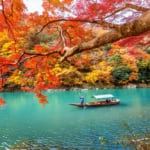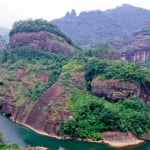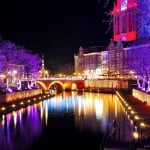Name: Yokote Castle (Yokote Park Observation Deck)
Address: 29-1 Shiroyama-cho, Yokote City, Akita Prefecture
Official/Related Site URL: http://www.city.yokote.lg.jp/kanko/page000004.html

9 Recommended Tourist Spots in Yokote City, Akita Prefecture! Discover Beautiful Nature, Culture, and B-Class Gourmet
Yokote City is blessed with abundant natural beauty such as the Ōu Mountains, Chokai Mountain, and the Yokote River. Its plains are ideal for agriculture, making it famous for its high-quality rice and other produce. It is also known for its winter tradition of “kamakura” (snow huts).
Recently, the B-class gourmet dish “Yokote Yakisoba” has also gained notable attention. In this article, we introduce the sightseeing spots you simply must visit in Yokote City.
table of contents
[x] close
9 Recommended Tourist Spots in Yokote City, Akita Prefecture! Discover Beautiful Nature, Culture, and B-Class Gourmet
1. Yokote Castle
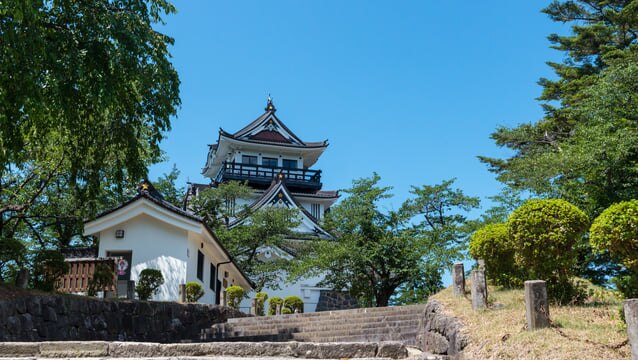
Yokote Castle was formerly known as “Asakura Castle.” It is said that, instead of using stone pavements, they planted chives (nira) to serve as embankments to prevent landslides and to deter enemies from scaling the walls—earning it the nickname “Nira Castle.” Yokote Castle fell during the Boshin War of 1868, and in the Showa era, a tower-style observation deck was reconstructed. Today, it serves as a recreational area for the citizens of Yokote and is a popular tourist spot attracting many visitors.
2. Kamakura-kan
Yokote’s kamakura (snow huts) are famous nationwide, but naturally, they can only be seen in winter. However, Kamakura-kan is a popular tourist spot where you can experience a kamakura regardless of the season. It is a place where visitors’ wishes to see and enter a kamakura are fulfilled.
Inside the kamakura room, where the temperature is always maintained at around -10°C, you can experience a real kamakura made from Yokote’s snow any time of the year. It’s also perfect for commemorative photos. In addition, there is a space where you can view videos of Yokote’s four seasons, as well as a shop stocked with local specialties—so be sure to stop by.
Name: Kamakura-kan
Address: 8-12 Chūō-cho, Yokote City, Akita Prefecture
Official/Related Site URL: http://www.yokotekamakura.com/02_kanko/kamakurakan.html
3. Ishizaka Yōjirō Literature Memorial Museum
The building is designed to evoke a traditional town house from the early Showa period and houses numerous materials related to Yōjirō Ishizaka, who spent over a decade in Yokote as both a teacher and writer. Ishizaka, the author of “Aoi Yama Myaku” (Blue Mountain Ranges), which was made into a blockbuster film during the Showa era, is commemorated here through a reproduction of his room from his Yokote days and exhibits related to the film.
Name: Ishizaka Yōjirō Literature Memorial Museum
Address: 2-10 Saiwa-cho, Yokote City, Akita Prefecture
Official/Related Site URL: http://www.city.yokote.lg.jp/koho/page000349.html
4. Red Brick Warehouse (KURA)
Originally a rice storehouse used in the Meiji period, the Red Brick Warehouse was rebuilt in brick after a great fire burned its exterior walls. With its retro and stylish appearance, this historically valuable building is registered as a nationally designated tangible cultural property. It is now used as a multipurpose hall managed by an NPO and Yokote City Hall.
It is a beloved location for local events such as lectures and karaoke club meetings. Although there is no resident manager, the entrance is open, and benches are provided so that you can take a short break and enjoy this historically significant building between sightseeing stops.
Name: Red Brick Warehouse (KURA)
Address: 176 Ōmori, Ōmori-cho, Yokote City, Akita Prefecture
Official/Related Site URL: http://oomorigt.ina-ka.com/akarenga/akarenga.html
5. Manga Art Museum
The Manga Art Museum is Japan’s first museum dedicated seriously to manga. It introduces the works and life of Takao Yaguchi, a native of the hometown of “Tsurikichi Sanpei,” as well as the history of manga as a cultural phenomenon. Special exhibitions featuring original artwork by famous manga artists from Japan and around the world are held, attracting many visitors from across the country.
Special events also take place where famous personalities such as manga artists and voice actors appear, making it a must-visit for manga fans!
Name: Manga Art Museum
Address: 285 Shinmachi, Masuda, Masuda-cho, Yokote City, Akita Prefecture (with Masuda Library attached)
Official/Related Site URL: http://manga-museum.com/
6. Takinosawa & Thirty-Three Kannon
Takinosawa is the one and only scenic spot in Yokote City, known for its spectacular rock ledges formed by waterfalls. Known since the Edo period, it became famous as a sacred site when, in the 10th year of the Showa era, Thirty-Three Kannon, Yakushi Nyorai, and Fudō Myōō were enshrined there. This led to its renown as a pilgrimage site.
In the summer, the negative ions in the air make this spot feel incredibly refreshing. At other times, the sight of the moss-covered rock ledges with waterfalls cascading down like streams of white silk is breathtaking. Taking a short rest here while gazing at the falls can leave you feeling revitalized. However, please note that this spot is only open for sightseeing from mid-April to late November.
Name: Takinosawa & Thirty-Three Kannon
Address: In the Takinosawa area of Muttsunari, Yokote City, Akita Prefecture
Official/Related Site URL: http://www.city.yokote.lg.jp/kanko/page300042.html
7. Uehata Onsen “Sawarabi”
Uehata Onsen “Sawarabi” is a ryokan nestled in a mountain gorge that feels like a hidden hot spring. It offers a day-use onsen for tourists as well as accommodation options. Facilities include “Fuki no Yu” (a hot spring using granite), a sauna, and a cold bath. There is also a Hinoki (cypress) built bath, where the soothing fragrance enhances your relaxing soak, warming both your body and mind.
Accommodation plans include the “Akabeko Sukiyaki Plan,” which lets you savor the elusive short-horn cattle, and an all-you-can-drink plan featuring many local Akita sake. How about spending a luxurious moment at this inn surrounded by nature?
Name: Uehata Onsen Sawarabi
Address: 15 Furukazaguchigai, Nerahanai, Masuda-cho, Yokote City, Akita Prefecture
Official/Related Site URL: http://www.sawarabinoyu.com/index.html
8. Roadside Station Sannai
Roadside Station Sannai is a popular tourist spot that offers a wide variety of delicious local products from Yokote. You can find plenty of local souvenirs such as Yokote’s famous pickled vegetables “Iburigakko,” Jomon soba, pure rice sake, and domestically produced acacia honey.
Within the facility, the “Soba-dokoro Kiko-ri” is popular for its tororo soba, plain soba, and ramen made with chicken soup from Hinai Jidori. The “Ekiben-ya” offers specialties like salt-grilled iwano and marinated grilled squid, featuring fresh ingredients prepared simply to highlight their natural flavors. The training center “Ki no Ka” also offers DIY woodcraft workshops. This local roadside station is an essential stop on any sightseeing trip!
Name: Roadside Station Sannai
Address: 34 Komekurazawa, Dobuchi, Yokote City, Akita Prefecture
Official/Related Site URL: http://a-woodyland.jp/
9. Kanazawa Park & Kanazawa Hachiman Shrine
Kanazawa Hachiman Shrine originated in 1093 when Minamoto no Yoshie subdued the Ōu region and, on the orders of the Fujiwara clan of Oshu, established a shrine dedicated to Hachiman on the conquered lands. It was originally known as “Kanazawa Hachiman Shrine.” Kanazawa Park is also famous for its cherry blossoms and azaleas, so if you visit during their blooming season, you can enjoy beautiful flowers.
At Kanazawa Hachiman Shrine, there is an event called “Dentō Kakeuta” held every year on September 14 and 15, where participants engage in spontaneous, paired singing competitions. As a precious remnant of the ancient “Utakaki,” this traditional art form is receiving renewed attention and is well worth a visit just to watch.
Name: Kanazawa Park / Kanazawa Hachiman Shrine
Address: 4, Yasumotokan, Kanazawa, Yokote City, Akita Prefecture
Official/Related Site URL: http://www.city.yokote.lg.jp/kanko/page300112.html
◎ Summary
Yokote City is a rich tourist destination where you can immerse yourself in beautiful natural scenery, experience cultural heritage, and even relax in hot springs. The local dialect of Akita exudes warmth, bringing comfort to your heart. When you unwind in the laid-back atmosphere of Yokote, you’ll enjoy a pleasant holiday with a sense of deep relaxation.
RELATED ARTICLES
REGIONS
CATEGORIES
FEATURED ON Akita
-
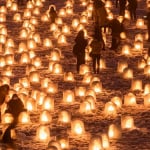
Experience the Snowy Winter of Akita! 7 Recommended Winter Spots in Akita
-
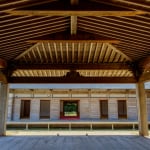
Let’s Explore Daisen City – The Town of Fireworks! 6 Must-Visit Tourist Spots Showcasing Sand and History in the San’in Region
-

Recommended souvenirs from Hachirogata Town, Akita Prefecture! From famous Japanese sweets to tsukudani
-

Killing Time at Odate-Noshiro Airport: A Complete Guide to Japan’s Unique Airport That’s Also a Roadside Station
-
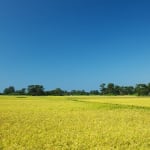
7 must-visit tourist spots around Kisakata Town in Nikaho City! Enjoy Mount Chokai and the Sea of Japan
MOST POPULAR ON Akita
-
 1
1Doha: Must-see Attractions in the Capital of Qatar
-
 2
2Toronto: 10 Things to do in this Picturesque Canadian City
-
 3
3Amarillo: A City Famous for It’s Amazing Canyons, Great History and Music
-
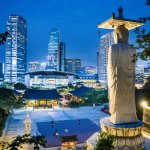 4
4South Korea: Dazzling Scenery, Rich Culture and Fascinating History
-
 5
5Kuwait: A Country in Middle East Asia Famous for Hot Sand Dunes and Stunning Cityscape


